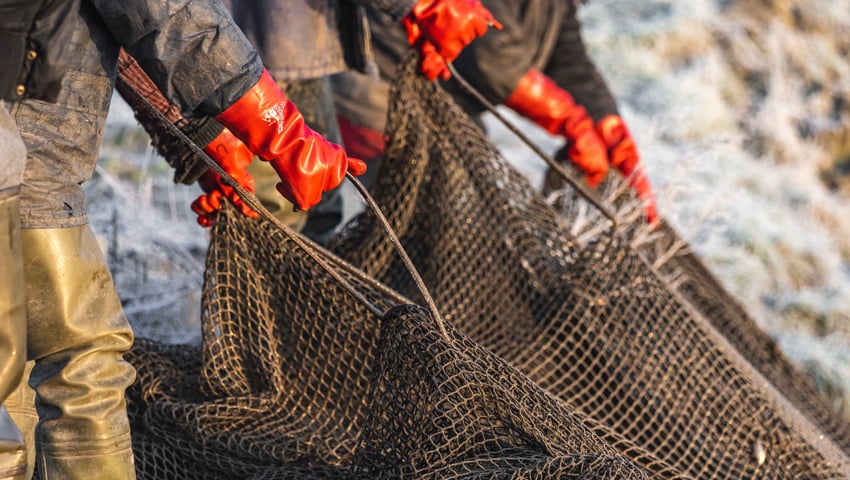For the first time the fish industry, traders, research institutes and NGOs around the world are holding consultations about improving the welfare of the fish that are caught.
The Catch Welfare Platform aims at finding ways of reducing stress and injury in the catch and the bycatch.
Hans van de Vis, an animal welfare researcher at Wageningen Livestock Research, is quite clear about that fish have feelings. He said, “From neurophysiological research and behaviour studies, we know that fish have feelings and communicate with each other. It varies from one species to another, making it difficult to generalise about their sensitivity, since there are 36,000 known species of fish.”
The issue of the wellbeing of fish is here to stay, he notes. “Supermarkets are starting to insist that the stress and injuries in the catch and the bycatch must be reduced.” To that end, the Catch Welfare Platform was created in November 2023, partly at Van de Vis’s instigation.
This platform, run by Wageningen University and Research, Michelle Boonstra, the Norwegian Institute of Marine Research and the Nofima Institute (also in Norway), aims to promote the welfare of caught fish by finding practical solutions for catches and processing on board fishing boats.
Through the platform, fisheries, traders and retailers, research institutions and NGOs are now consulting each other for the first time with a view to making improvements, with the welfare of the fish and the efficiency of the sector going hand in hand.
That there is a lot of interest in the initiative was clear from the 121 attendees at the kick-off conference in Bergen, Norway at the end of last year.
Van de Vis was surprised that more than 60 representatives of the fishing industry signed up at once, including fisheries companies, trawlers, processers and their branch organisations. There were attendees from 17 countries and five continents.
What are the main welfare issues?
Van de Vis said, “Fish are hauled aboard in large quantities. Many fish get injured in the process, including much of the bycatch that is returned to the sea later.” One of the improvements that are possible is in the kind of net that is used, he believes. “There is promising research on the use of a net fitted out with a waterbag at the end of the net, which reduces the pressure on the fish and therefore the injuries.”
Stunning the fish can help too, as well as improving the product quality and streamlining the processing on board. Several research groups in Wageningen and elsewhere are developing stunning equipment. Stunning on board is usually done with electricity. In the next three years, a group of experts will establish a standard for stunning equipment.
Injuries are also incurred in the pumps that draw the mackerel out of the nets onto the ship. “Because the fish get squashed together, they can suffer from oxygen deficiency, which is extremely stressful. So that must be improved.”
The Catch Welfare Platform works on the One Welfare principle, which takes into account the environment, the welfare of the fish, that of the consumer (food security) and that of the fishers (conditions on board).
So the platform aims to work out guidelines and fish welfare modules for fisheries training courses.
Van de Vis said, “Fishers shouldn’t have to fill in lists on board. They need indicators with which they can quickly see whether the entire process is causing less stress. The less stress the fish experience, the better the quality of the fish as well. The increased chance of survival for the bycatch that is returned to the sea also contributes to a more sustainable fishery.”
Certification
Besides the fishing industry, NGOs are represented in the platform, including the Marine Stewardship Council (MSC), which certifies sustainable caught fish independently.
Fish welfare is not yet an aspect of MSC certification.
Van de Vis said, “I hope they will include the guidelines we are going to develop for animal welfare during the fishing process in their criteria for MSC certification.”
One of the participating companies, SafetyNet Technologies, which develops precision fishing technology, has high expectations of the platform. Project leader, Tom Rossiter, said, ‘We can contribute with our special cameras. They provide underwater footage that gives an immediate overview on board of the catch.’
Another participant is the Aquatic Life Institute in New York, which targets improvements to the living conditions of sea animals in the wild and in fish farms. Christine Xu said, “We are taking part because there is still too little attention being paid to fish welfare. In the new Catch Welfare Platform I meet new companies, researchers and retailers. For me the platform can be considered a success in three years’ time if we develop a new fisheries management policy that includes fishing methods that cause fish less stress and suffering.’
